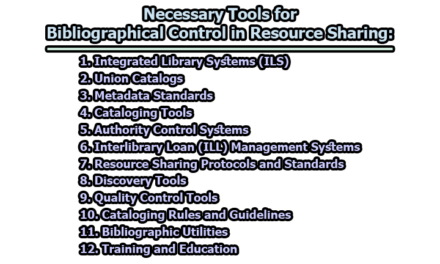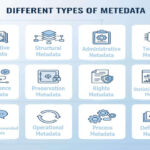The Role of Library Circulation:
In the ever-evolving landscape of information dissemination, libraries stand as bastions of knowledge, preserving and providing access to an extensive array of resources. At the heart of a library’s operations lies the essential function of Library Circulation. It encompasses a multifaceted range of tasks aimed at facilitating seamless access to library materials for patrons while ensuring the orderly management of resources. The Circulation Desk serves as a hub where patrons interact with library staff to borrow, return, renew, and seek guidance on the utilization of library resources. In the rest of this article, we will explore the role of library circulation.
1. Understanding Library Circulation: Library Circulation functions as the core mechanism through which libraries lend materials to users. These materials encompass a diverse spectrum, including books, periodicals, audiovisual materials, maps, and more, forming the foundational repository of knowledge within a library’s collection. The circulation process involves several intricate tasks that collectively form the backbone of user services within the library.
2. Checking Out and Renewing Materials: The fundamental activity of Library Circulation involves checking out materials to library patrons. This process necessitates the registration of library users, issuance of library cards, and the systematic recording of borrowed items. Additionally, patrons may have the option to renew materials to extend the borrowing period, promoting continued access to resources.
3. Reserving and Managing Checked Out Items: Libraries often offer reservation services, allowing patrons to request materials that are currently checked out by others. This reservation system ensures equitable access to high-demand resources, enabling patrons to secure items once they become available. Library staff actively manage these requests, facilitating a smooth transition of materials between patrons.
4. Checking In and Assessing Returned Materials: Upon the return of borrowed materials, library staff perform detailed inspections to check for damages. Any identified damages undergo assessment, and if possible, repairs are carried out to restore the items to usability. In instances where repair is unfeasible, the materials may require replacement, ensuring the integrity of the library’s collection.
5. Handling Fines and Charges: Library Circulation involves the management of fines for overdue or damaged materials. Patrons are required to settle fines accrued due to late returns or damages to borrowed items. Moreover, circulation staff oversee the collection of fees for library subscriptions and other charges, thereby supporting the financial sustainability of the library.
6. Maintaining Order in the Stacks: The orderly arrangement of library materials is crucial for efficient retrieval and navigation. Library staff undertake the responsibility of re-shelving materials based on the prescribed classification systems like the Library of Congress Classification (LCC) or the Dewey Decimal Classification (DDC). This meticulous organization ensures that materials are readily accessible to patrons based on their subject classifications.
7. Role of the Circulation Desk: Central to the effective execution of Library Circulation activities is the Circulation Desk, strategically positioned at the library’s entrance. Here, patrons interact with knowledgeable staff who guide them through the borrowing process, offer assistance in using library resources, and provide basic reference services. The Circulation Desk acts as the frontline interface, fostering a welcoming environment and addressing patrons’ informational needs.
8. Empowering Access and Service Excellence: Library Circulation extends beyond mere transactions; it embodies the ethos of accessibility and service excellence. By streamlining the borrowing process, libraries empower users to explore diverse subjects, conduct research, and broaden their knowledge horizons. The collaborative efforts of circulation staff contribute significantly to fostering an inclusive and enriching environment within the library.
9. Challenges and Innovations in Library Circulation: In the digital era, libraries face the dual challenge of adapting to technological advancements while preserving the essence of traditional circulation services. Innovations such as self-checkout systems, online renewals, and digital cataloging have revolutionized the borrowing experience, offering patrons greater convenience. However, these innovations also necessitate continual staff training and infrastructure upgrades to ensure seamless integration and user support.
In conclusion, Library Circulation stands as a linchpin in the realm of library services, bridging the gap between patrons and the wealth of resources held within library collections. Its multifaceted nature encompasses a range of tasks, from managing checkouts to maintaining organizational order, all aimed at facilitating access to knowledge. The Circulation Desk, with its dedicated staff, serves as a beacon of assistance, enriching the library experience for patrons. As libraries evolve to meet the demands of a changing landscape, the commitment to efficient circulation practices remains foundational, ensuring that the treasures of knowledge remain accessible to all who seek them.

Library Lecturer at Nurul Amin Degree College










